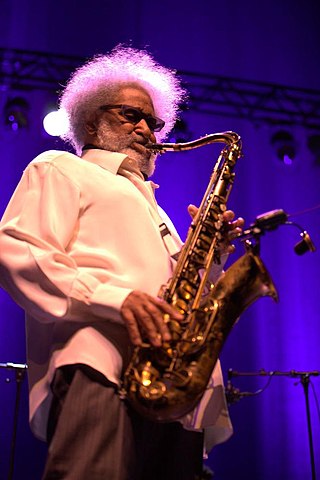
Walter Theodore "Sonny" Rollins is an American retired jazz tenor saxophonist who is widely recognized as one of the most important and influential jazz musicians.
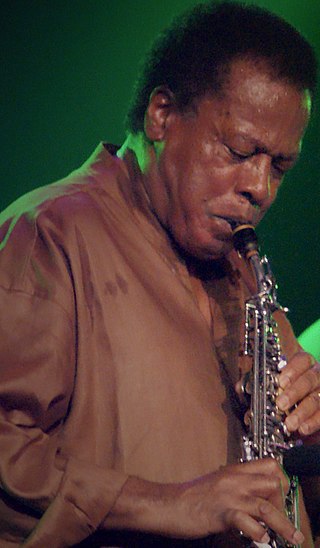
Wayne Shorter was an American jazz saxophonist, composer and bandleader. Shorter came to mainstream prominence in 1959 upon joining Art Blakey's Jazz Messengers, for whom he eventually became the primary composer. In 1964 he joined Miles Davis' Second Great Quintet, and then co-founded the jazz fusion band Weather Report in 1970. He recorded more than 20 albums as a bandleader.

John McLaughlin, also known as Mahavishnu, is an English guitarist, bandleader, and composer. A pioneer of jazz fusion, his music combines elements of jazz with rock, world music, Western classical music, flamenco, and blues. After contributing to several key British groups of the early 1960s, McLaughlin made Extrapolation, his first album as a bandleader, in 1969. He then moved to the U.S., where he played with drummer Tony Williams's group Lifetime and then with Miles Davis on his electric jazz fusion albums In a Silent Way, Bitches Brew, Jack Johnson, Live-Evil, and On the Corner. His 1970s electric band, the Mahavishnu Orchestra, performed a technically virtuosic and complex style of music that fused electric jazz and rock with Indian influences.
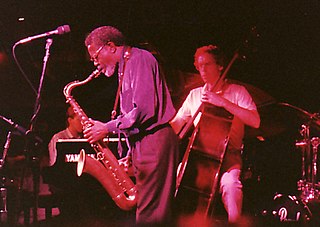
Joe Henderson was an American jazz tenor saxophonist and very occasional flute player. In a career spanning more than four decades, Henderson played with many of the leading American players of his day and recorded for several prominent labels, including Blue Note, Milestone, and Verve.

Arthur Edward Pepper Jr. was an American jazz musician, most known as an alto saxophonist. He occasionally performed and recorded on tenor saxophone, clarinet and bass clarinet. Active primarily in West Coast jazz, Pepper first came to prominence in Stan Kenton's big band. He was known for his emotionally charged performances and several stylistic shifts throughout his career, and was described by critic Scott Yanow as having "attained his goal of becoming the world's greatest altoist" at the time of his death in 1982.
DownBeat is an American music magazine devoted to "jazz, blues and beyond", the last word indicating its expansion beyond the jazz realm that it covered exclusively in previous years. The publication was established in 1934 in Chicago, Illinois. It is named after the "downbeat" in music, also called "beat one", or the first beat of a musical measure.
"Take the 'A' Train" is a jazz standard by Billy Strayhorn that was the signature tune of the Duke Ellington orchestra.
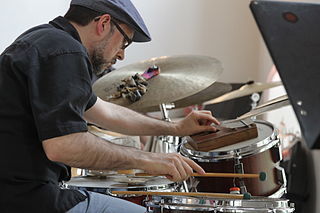
John Hollenbeck is an American jazz drummer and composer known for his work with The Claudia Quintet and Bob Brookmeyer.

Dream Keeper is an album by bassist Charlie Haden that was recorded in 1990 and released by Blue Note Records. The album was nominated for a Grammy Award for Best Large Jazz Ensemble Performance and was voted "Jazz album of the year" in Down Beat magazine's 1991 critics' poll. Haden, Carla Bley and Ray Anderson also placed first in that year's Acoustic Bass, Composer and Trombone poll categories, respectively.
Trent Kynaston, born December 7, 1946 in Tucson, Arizona, is an American jazz and classical saxophonist, music educator, and composer and has performed throughout the United States, Canada, Europe, Central America, South America, Africa, and Asia.

Loren Stillman is a jazz saxophonist and composer. He has received two Outstanding Performance Awards and the Rising Star Jazz Artist Award (2004) from Down Beat Magazine. and received the CMA/ASCAP Award for Adventurous Programming and the ASCAP Young Jazz Composers Award in 2005.
Frederick I. Sturm was a jazz composer, arranger and teacher.

John Escreet is an English pianist, composer and improviser. He has lived in the United States since 2006 and currently resides in Los Angeles, California.

Grace Kelly is an American jazz musician, composer, and arranger. Kelly has produced and released recordings of her own, scored soundtracks, and tours with her band. She was named one of Glamour magazine's Top 10 College Women in 2011; and she has been featured on CNN.com and on the NPR radio shows Piano Jazz with both Marian McPartland and Jon Weber, as well as on WBGO's JazzSet with Dee Dee Bridgewater.

Games is a compact disc by the University of Northern Iowa Jazz Band One recorded in the studio with one cut recorded live at the 1998 Montreux Jazz Festival. This was their 7th CD release in as many years. This group has been consistently recognized as one of the top collegiate jazz ensembles in the country having won numerous Down Beat awards and accolades from music industry professionals. "Bob Washut has a magical way with these kids. Each time I hear one of his groups, I'm even more blown way than the last time."
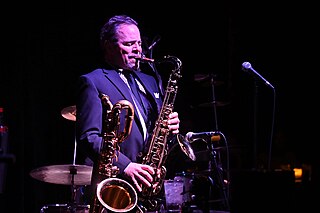
[[
Quentin Bryan Angus is an Australian jazz guitarist.

Remy Le Boeuf is a jazz saxophonist, composer and multi-instrumentalist born in Santa Cruz, California. He leads the jazz orchestra Assembly of Shadows, co-leads the jazz group Le Boeuf Brothers, and has a successful solo career as a composer and sideman integrating jazz, classical, and indie-rock genres. The New York Times describes his music as “evocative”.

Michael Blake is a Canadian-American saxophonist, composer and arranger. Blake is based in New York City where he has led a robust career leading his own bands. As a sideman Michael has performed with Charlie Hunter, The Lounge Lizards, Steven Bernstein, Ben Allison and Ray LaMontagne. The New York Times jazz critic Ben Ratliff wrote,"Mr. Blake, on tenor especially, is an endlessly engaging improviser, and an inquisitive one".
Brian Krock is an American multi-instrumentalist, composer, arranger and bandleader based in New York City. Krock leads the ensembles Big Heart Machine and liddle. He is also active in Broadway theatre, performing in orchestras on a multitude of woodwinds.














